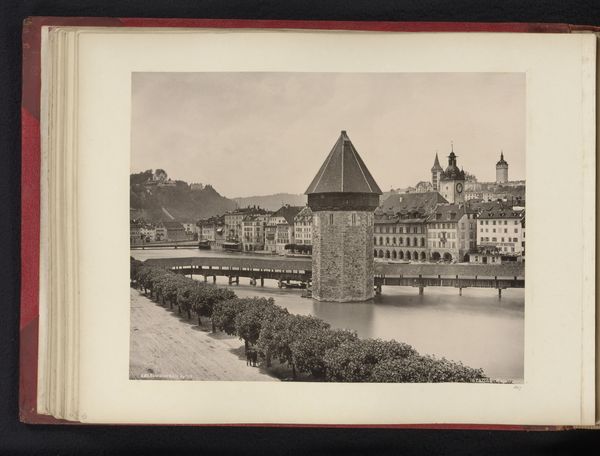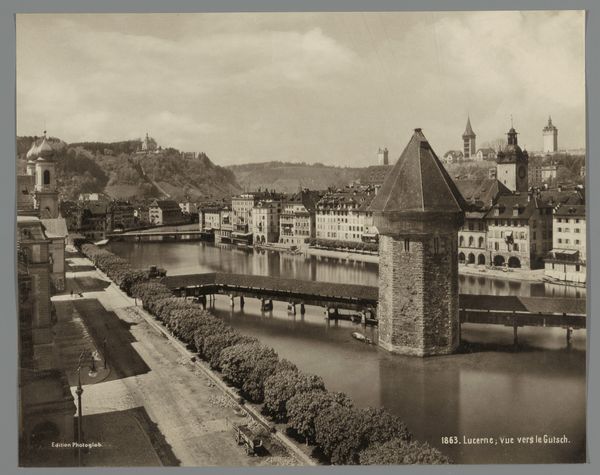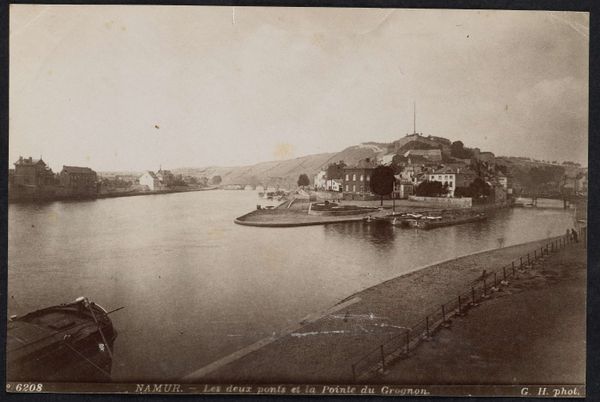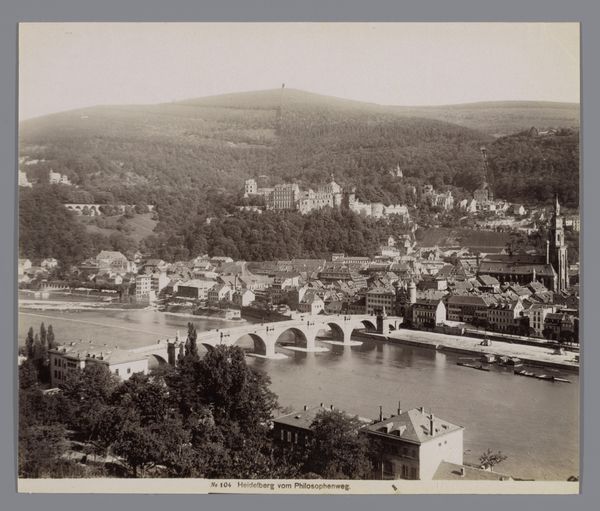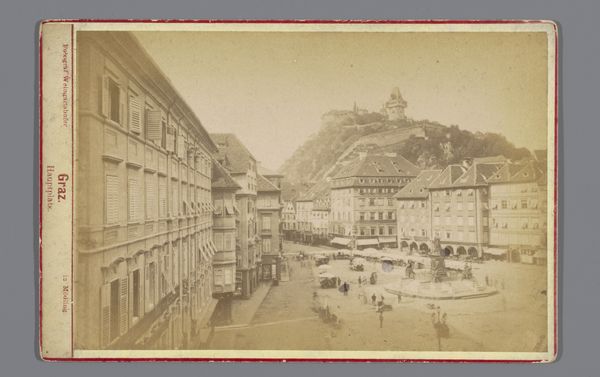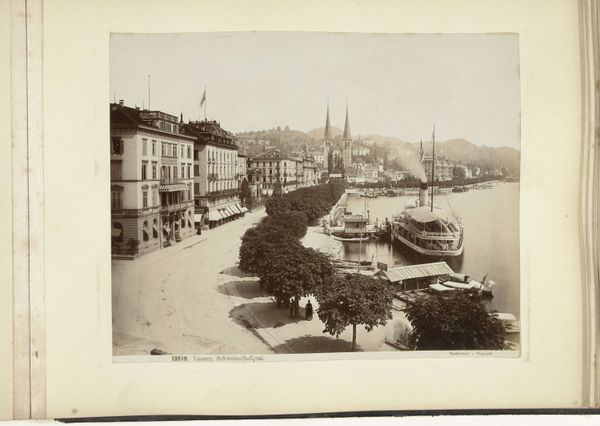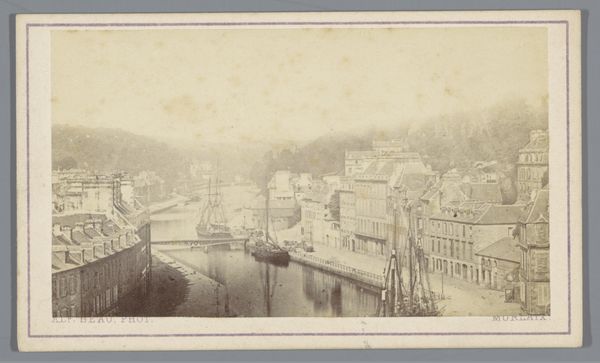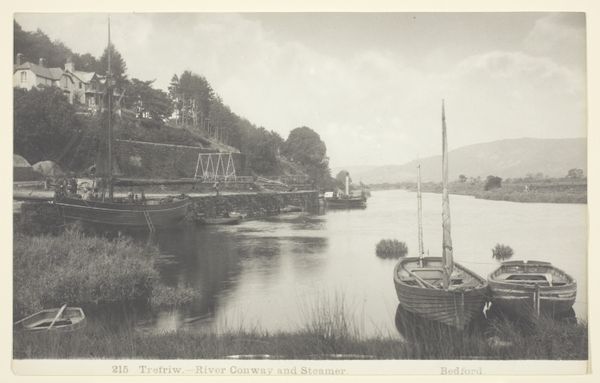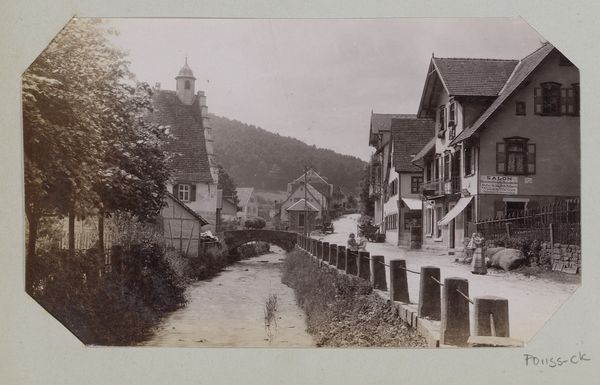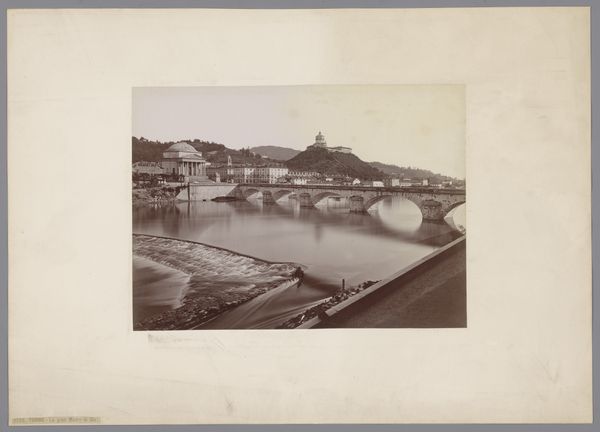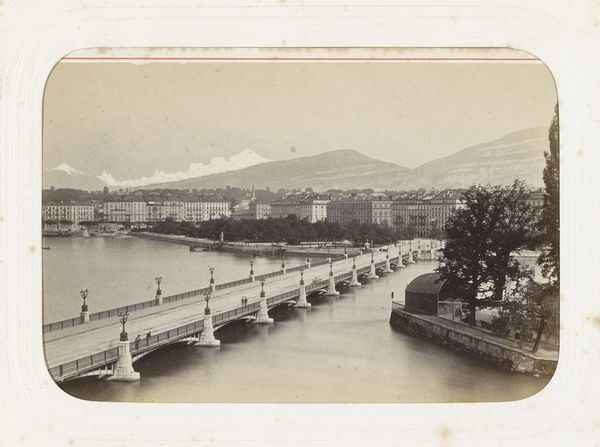
print, photography, gelatin-silver-print
#
lake
# print
#
landscape
#
photography
#
gelatin-silver-print
#
19th century
#
cityscape
Dimensions: height 205 mm, width 248 mm, height 277 mm, width 367 mm
Copyright: Rijks Museum: Open Domain
Editor: We're looking at "Kapelbrug over de Reuss in Luzern," a gelatin-silver print from the 1880s or 90s by Giorgio Sommer, currently held at the Rijksmuseum. It's a classic cityscape—almost serene, except for the very sharp geometry of the bridge and tower. What stands out to you about its composition? Curator: Immediately, one observes the rigorous attention to structural balance. The image plane is essentially divided into thirds, horizontally. The weighty mass of the bridge occupies the central band, countered by the negative space of the water in the foreground and the atmospheric gradation above. Consider, too, the vertical thrust of the Wasserturm, offset by the more dispersed forms of the buildings along the left margin. It establishes a clear visual rhythm. Editor: So, it’s almost like a visual equation, each element balancing the others? Does the light play a role in this balance? Curator: Indubitably. The monochromatic rendering enhances the textural differentiation—the smoothness of the water versus the roughhewn stone of the tower. Note how the light catches the surfaces, accentuating the forms' intrinsic materiality. There is a carefully controlled tonal range that emphasizes the geometry and massing. Editor: I see what you mean. Initially, I saw the photograph as simply a nice view, but now I see it’s more about the relationships between these shapes. Curator: Precisely. It’s a study of formal relationships, of how shapes, light, and texture interact within the pictorial frame to construct a compelling visual experience. Editor: That is really insightful. I hadn’t considered it that way before. Thanks for pointing out the underlying structure!
Comments
No comments
Be the first to comment and join the conversation on the ultimate creative platform.
